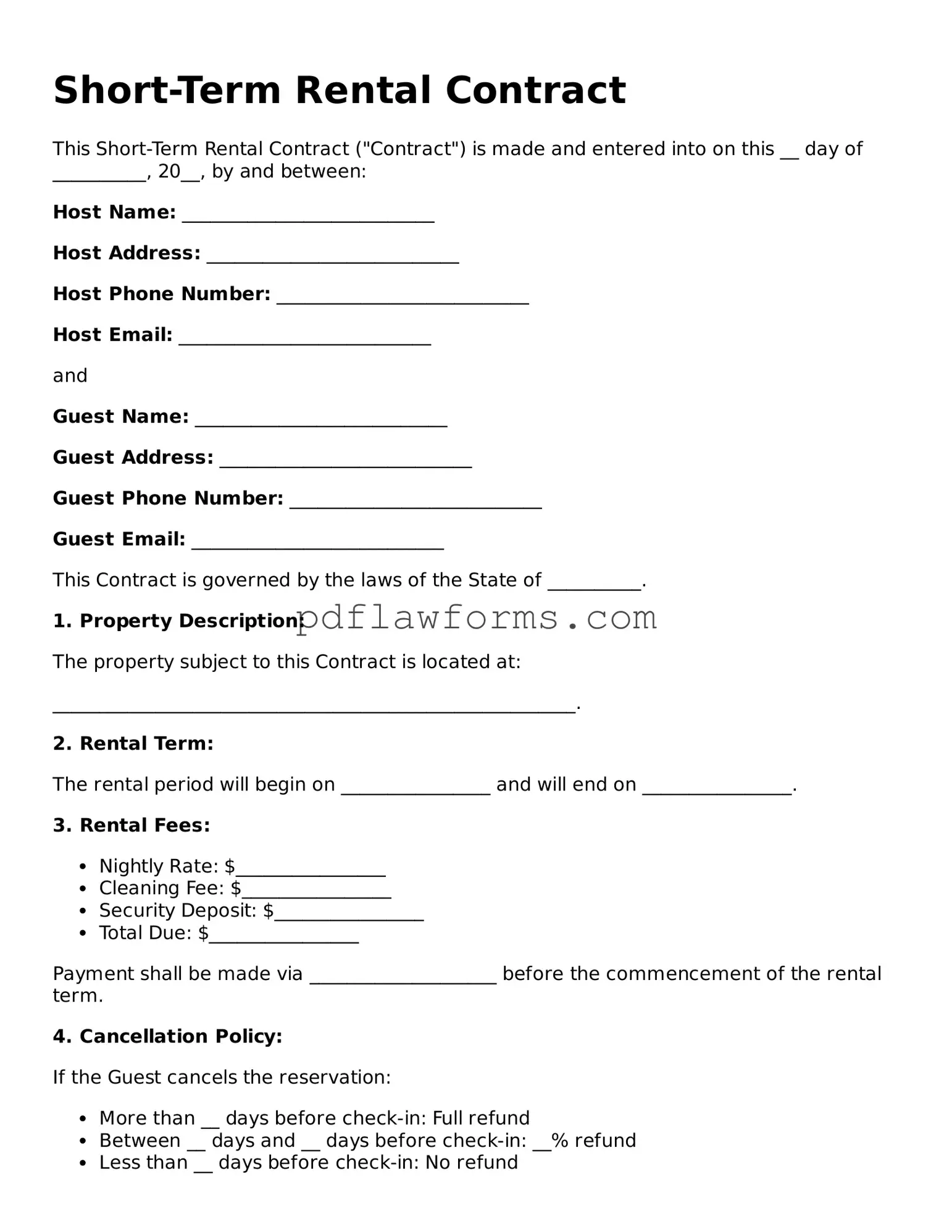Filling out a Short-Term Rental Contract form can seem straightforward, but many people make common mistakes that can lead to misunderstandings or legal issues. One frequent error is not reading the entire contract before signing. It’s essential to understand all terms and conditions. Skimming through the document can result in missing critical details.
Another mistake is failing to provide accurate personal information. This includes names, addresses, and contact numbers. Incorrect information can complicate communication and create issues if disputes arise. Always double-check your entries for accuracy.
People often overlook the importance of specifying rental dates clearly. Ambiguous dates can lead to confusion about the rental period. Make sure to write down the exact start and end dates to avoid any potential conflicts.
Some individuals neglect to include the total rental amount or fail to clarify payment terms. This can lead to disputes over what is owed. Be explicit about the rental fee, any deposits, and when payments are due.
Another common error is not discussing or including additional fees. Cleaning fees, security deposits, and other charges should be clearly outlined in the contract. Transparency in these costs prevents surprises later on.
People sometimes forget to address cancellation policies. It’s crucial to understand the terms regarding cancellations and refunds. Clearly stating these policies can save both parties from potential disagreements.
Inadequate attention to the rules of the property can also be a mistake. Each rental may have specific guidelines regarding noise, pets, or occupancy limits. Ensure that these rules are included in the contract to avoid conflicts during the stay.
Some renters fail to verify the property owner’s identity or authority to rent the property. This oversight can lead to issues if the owner is not legitimate. Always confirm that you are dealing with the rightful owner or authorized representative.
Another mistake is neglecting to include a clause for liability or damage. It’s important to clarify who is responsible for damages that may occur during the rental period. A clear liability clause protects both the renter and the property owner.
Finally, many people forget to keep a copy of the signed contract. Having a record of the agreement is vital for reference in case of disputes. Always ensure you have a copy for your records.
